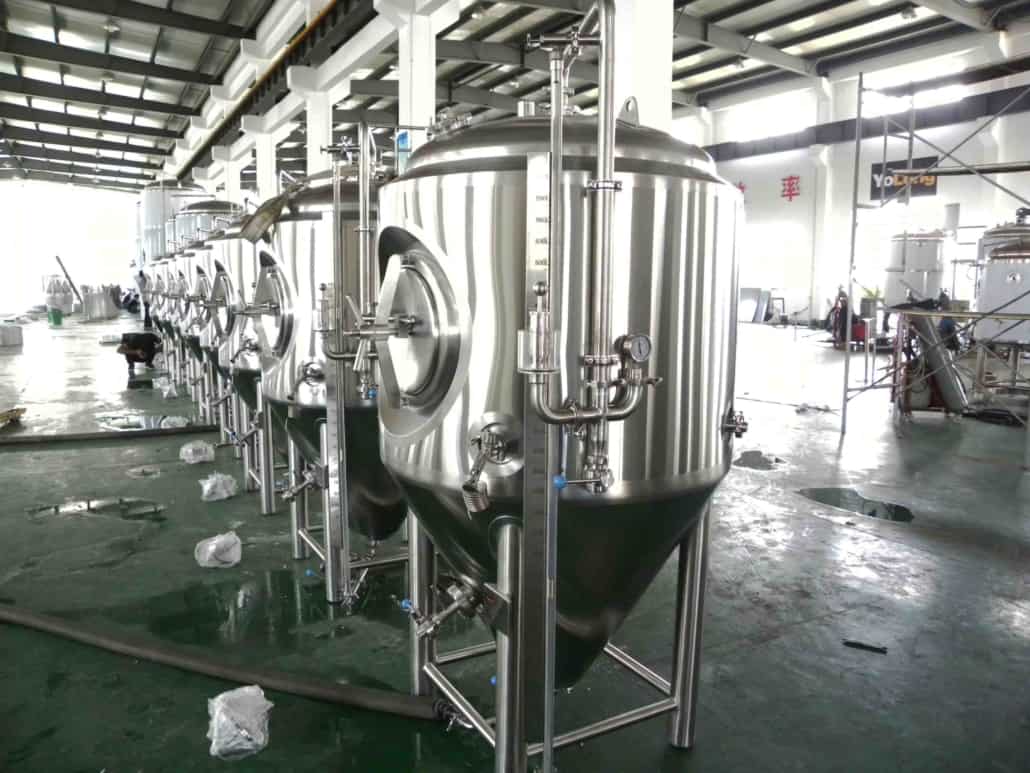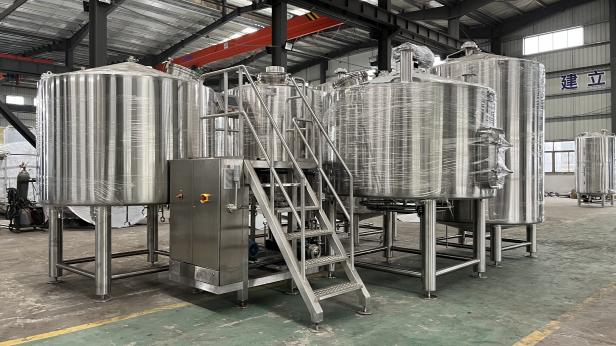Nano Brewery Equipment Guide
Homebrewing beer on a nano scale opens up the ability for specialty craft brewers to experiment with unique ingredients and flavors on a small production system before potentially scaling up to larger commercial brewing. Setting up a 1-3 barrel nano brewhouse allows creative freedom without major capital investment. nano brewery equipment guide covers key considerations for designing and operating a nano brewery.
Nano Brewery Equipment Types
The core components of a nano brewhouse include:
| Equipment | Description |
|---|---|
| Mash Tun | Converts mashed grain starches to fermentable sugars |
| Lauter Tun | Separates sweet wort from spent grain |
| Brew Kettle | Boils wort with hops for aroma/bitterness |
| Fermenter | Ferments sweet wort into beer |
| Brite Tank | Carbonates/clears beer before serving |
| Glycol Chiller | Cools wort quickly for pitching yeast |
| Piping | Transfers liquids between vessels |
| Control Panel | Manual or automated temperature/timing control |
Additional equipment may include:
- Grist Case – Holds/feeds grain
- Mill – Crushes malt kernel
- Whirlpool Unit – Settles hops/coagulants
- Heat Exchanger – Cools hot wort quickly
- Air Compressor – Pressurizes fermenters
- Filter – Clarifies/sterilizes beer
- Kegs – Serves final product

nano brewery equipment Sizing Considerations
When designing a nano brewery, key factors determining equipment size and layout include:
| Parameter | Typical Ranges |
|---|---|
| Batch Size | 1-3 barrel (BBL) = 31-93 gallons |
| Annual Production | ~100-500 BBLs |
| Tasting Room Size | 50-150 person capacity |
| Facility Footprint | 500-1500 sq ft |
| Boil Kettle Size | 3-5 BBL |
| Fermentation Tanks | 3-5 units at 3 BBL |
| Brite Tanks | 1-3 units at 3 BBL |
| Glycol Chiller Size | 5-10 horsepower |
| Electrical Supply | 15-30 kW, 220-480 V |
Layout Options
Standard nano brewhouse configurations include:
- Linear – Equipment in row
- L-shape – Efficiency footprint
- Cluster – Grouped vessels
- Multi-level – Save floorspace
Customization
While 1-3 BBL nano systems are available turnkey, customization allows:
- Unique vessel shapes/sizes
- Specialized equipment like open fermenters
- Match brewery design aesthetic
nano brewery equipment Suppliers & Pricing
| Company | 1 BBL System Price | 3 BBL Turnkey Price |
|---|---|---|
| Premier Stainless | $35,000 | $85,000 |
| Stout Tanks | $45,000 | $130,000 |
| JV Northwest | $55,000 | $150,000 |
| Specific Mechanical | $60,000 | $175,000 |
Installation & Operation Guidance
Key considerations for installing and operating a nano brewhouse:
| Phase | Actions |
|---|---|
| Installation | Floor drainage, glycol/steam lines, electrical, plumbing, ventilation, safety equipment |
| Initial Brews | Recipe development, water chemistry adjustment, fermentation tracking, quality control |
| Ongoing Production | Cleaning/sanitation SOPs, lab testing, record keeping, yeast propagation |
| Maintenance | Gaskets, o-rings, pumps, seals, valves, glycol |
| Troubleshooting | Off-flavors, contamination, consistency issues |
Selecting nano brewery equipment Suppliers
Criteria to evaluate vendors for nano brewery equipment:
| Parameter | Considerations |
|---|---|
| Reputation | Years in business, client references/testimonials, professional affiliations |
| Experience | Expertise with nano systems specifically, number of systems installed successfully |
| Offerings | Range of standard and customizable equipment available |
| Design Services | Ability to spec brewhouse technology, facility layout, size for needs |
| Lead Times | Production schedule, site readiness requirements |
| Customer Support | Installation support, operator training, troubleshooting assistance |
| Terms | Deposits/payment timing flexibility, warranties |
Comparing Nano Brewery Options
| Pros | Cons |
|---|---|
| Lower capital investment than large brewery | Limited production volume based on system size |
| Creative flexibility for recipe innovation | More manual labor intensive than automated brewhouse |
| Intimate tasting room experience | Restricted distribution reach initially |
| Build local customer community | Scaling challenges if demand exceeds capacity |
| Ideal for specialty ingredients | Stiff competition among craft breweries |
Additional FAQs About Starting a Nano Brewery
1) What utilities and infrastructure does a 1–3 BBL nano brewery typically require?
- Plan for 3‑phase power (208–480V; ~15–40 kW depending on electric/direct-fire/steam), potable water 3–8 gpm at 40–60 psi with carbon filtration, a glycol chiller sized for concurrent fermentations plus crash cooling, properly sloped trench drains, adequate make‑up air/ventilation, and CO2 supply with safety monitoring.
2) Steam, direct-fire, or electric for a nano brewhouse?
- Steam: best heat control and distribution, higher capex/boiler compliance. Direct‑fire: lower capex, needs robust hooding/combustion air. Electric: clean/precise, may be limited by service capacity and tariffs. For 1–3 BBL, electric and direct‑fire are most common.
3) How many fermenters should pair with a 1–3 BBL system?
- A practical cellar is 4–6 unitanks (at brewhouse size or 2× for double-batching) plus 1–2 brite tanks. Use your average tank residency (ales 10–16 days, lagers 21–30 days) to back into weekly turns.
4) Is basic automation worth it at nano scale?
- Yes. PID temperature control, timed pump/valve interlocks, and simple batch logging improve repeatability and reduce rework. Full PLC/HMI can be overkill but pays off if you plan to expand to 5–10 BBL.
5) How can a nano brewery minimize oxygen pickup without big-lab gear?
- Purge tanks/lines with CO2, closed transfer from racking arm, spund where possible, use DO‑scavenging practices (deoxygenated water for CIP/rinses), and add an inline sight glass + low‑ppm DO meter when budget allows.
2025 Industry Trends Shaping Nano Brewery Equipment
- Pressure-capable unitanks standardization: 2–3 bar MAWP increasingly common, enabling spunding, closed transfers, and CO2 savings.
- Modular skid brewhouses: FAT‑tested plug‑and‑play systems compress installation time and reduce commissioning losses.
- Compact QA: Affordable handheld DO meters, Bluetooth hydrometers/densitometers, and mobile cellar logging apps adopted at nano scale.
- Sustainability by design: Heat recovery (wort→HLT), higher insulation specs, low‑flow CIP sprays, and CO2 capture “micro” options start to trickle down.
- Supply normalization: Lead times improved versus 2021–2023; custom finishes/automation still extend schedules.
2025 Data Snapshot for Nano Brewery Planning
| Metric | 2022 | 2024 | 2025 (proj.) | Notes / Sources |
|---|---|---|---|---|
| Avg. lead time, 1–3 BBL skid brewhouse | 18–24 wks | 12–18 wks | 10–16 wks | BA supplier briefings; vendor surveys |
| Share of new nano unitanks with ≥2 bar rating | 30% | 45% | 52–58% | Supplier catalogs; trade press |
| Nanos using inline/handheld DO at cold-side | 18% | 28% | 34–40% | QA vendors; forums |
| Typical turnkey capex (1–3 BBL + small taproom, USD) | $150–300k | $180–350k | $190–380k | Startup budgets; inflation moderation |
| Reported CO2 savings via spunding/closed transfers | — | 20–30% | 25–40% | Brewery case notes; IBD talks |
Sources:
- Brewers Association (planning, QA): https://www.brewersassociation.org
- Institute of Brewing & Distilling: https://ibd.org.uk
- OSHA/NIOSH CO2 safety: https://www.cdc.gov/niosh
- ASTM A967 Passivation (sanitary SS care): https://www.astm.org/a0967_a0967m-17.html
Latest Research Cases
Case Study 1: Plug‑and‑Play 3 BBL Skid Accelerates Opening (2025)
Background: A nano brewery on a tight lease timeline needed first pours before the summer season.
Solution: Chose a factory FAT‑tested 3 BBL two‑vessel skid with pre‑plumbed glycol, electric elements, and PID controls; installed 5×3 BBL unitanks rated 2 bar; implemented closed‑transfer SOPs and riboflavin CIP validation.
Results: Commissioning time reduced ~25%; first saleable batch 4 weeks earlier; startup dump beer reduced by 12%; CO2 purchase down ~28% in first quarter through spunding.
Case Study 2: Low‑Cost QA Stack Reduces Variability (2024)
Background: A 2 BBL nano saw inconsistency in ABV/attenuation and carbonation, leading to rework.
Solution: Adopted handheld Bluetooth densitometer, bench DO meter for brite tank checks, and digital cellar logs; added inline carb stone with pressure control and standard purge/transfer procedures.
Results: Variance in FG decreased by 40%; over/under‑carb issues fell 70%; dump rate dropped from 6% to 1.5%; payback in ~10 months via reduced waste and improved consistency.
Expert Opinions
- John Palmer, Author of “How to Brew” and brewing consultant
Viewpoint: “At nano scale, temperature control and oxygen management deliver the biggest gains. Get your unitanks pressure‑capable and your transfers closed.” - Charlie Bamforth, Distinguished Professor Emeritus of Malting & Brewing Science, UC Davis
Viewpoint: “Cleanability is quality. Validate CIP, verify passivation, and keep oxygen out—these principles apply equally to nanos.” - Katherine C. Smart, Professor of Brewing Science; Former Global VP R&D, AB InBev
Viewpoint: “Instrument modestly but smartly—basic QA paired with procedural control can rival larger operations for consistency.”
Citations:
- UC Davis CPE brewing resources: https://cpe.ucdavis.edu
- Brewers Association Quality: https://www.brewersassociation.org
- IBD resources: https://ibd.org.uk
Practical Tools and Resources
- ProBrewer calculators and nano forums (sizing, utilities, cellar planning): https://www.probrewer.com
- G&D Chillers load calculator (nano glycol sizing): https://gdchillers.com
- Anton Paar handheld density/CO2 and inline sensors: https://www.anton-paar.com
- BA Draught Quality Manual and QA Best Practices: https://www.brewersassociation.org
- OSHA/NIOSH CO2 and confined space safety guidance: https://www.cdc.gov/niosh
- ASTM A967 Passivation for stainless tanks and fittings: https://www.astm.org/a0967_a0967m-17.html
Note: When specifying nano brewery equipment, confirm MAWP (≥2 bar on unitanks), internal finish (Ra/electropolish where critical), jacket surface area and insulation thickness, spray-ball coverage (riboflavin test), sanitary valve quality, and PLC/PID control integration. Verify local electrical, ventilation, wastewater, and pressure-vessel code compliance before purchase.
Last updated: 2025-09-02
Changelog: Added 5 nano-specific FAQs, 2025 trend snapshot with data table, two recent nano case studies, expert viewpoints, and curated tools/resources with authoritative links.
Next review date & triggers: 2026-01-15 or earlier if equipment lead times shift >20%, code/safety guidance changes, or new BA/IBD QA recommendations emerge.
Share this entry
Interested in learning more about Brewing Systems including additional details and pricing information? Please use the form below to contact us!
YOLONG BREWERY EQUIPMENT FAQS
- Commercial Brewery / Craft Brewery / Microbrewery / Nanobrewery
- What is The Difference Between Craft Beer and Industrial Beer?
- The Bespoke Differences In Custom Brewing Systems
- Everything You Need to Know About Kettle Souring
- How to Choose Brewing Equipment for Your business?
- How To Choose The-Best Partner To Build Your Commercial Microbrewing System?
- Two Detection Sensors That You Need To Use In Your Brewhouse System
- Remote Control Applications in Brewing Equipment/How does it work?
- How To Clean Your Brand New Brewery Tanks?

